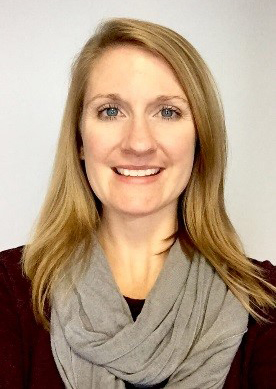A LETTER FROM KEVIN L. BOYCE, FRANKLIN COUNTY COMMISSIONER
Happy New Year, and welcome to the January edition of Commissioner Connection!
We are so excited to get 2018 off to a good start. I’ve been on the Board of Commissioners for a year now, and am getting a good handle on all of the important work that we commissioners do. I’m particularly honored and excited to have been chosen by my colleagues on the board to be President of the Franklin County Board of Commissioners for this year.
More than 1.3 million people call Franklin County home, and the Board of Commissioners represents all of them. We just completed our 2018 budget planning and allocation, and you can see in that budget all of the ways in which Franklin County government touches the lives of each and every resident. Each year, the largest portion of the All Funds budget, which includes levy and state and federal pass-through dollars, goes to support social services for our neighbors in need, and most of the General Fund budget provides for public safety, justice, and security. The budget document also reflects the commissioners’ stated priorities and core principles of Responsive Government, Community Safety, Economic Development, Supportive Human Services, and Good Stewardship of the Environment. You can see the full budget on the Board of Commissioners website.
Last year was a good one in Franklin County despite a number of challenges we faced from the state and federal governments. We were proud to have introduced the Franklin County Opiate Action Plan to help begin turning the tide of opiate overdoses in our community, we broke ground on a new Corrections Center, and we started the New Americans Advisory Council to help the approximately 10% of our residents who were born elsewhere to begin to make sense of the new attacks they’re facing from Washington.
In 2019, we’re looking forward to beginning work on a brand new forensic science center on the south side of Franklin County, and are working to bring forward a number of new initiatives aimed at reducing poverty in Central Ohio. We know that our region is thriving in many ways, but it is also true that 15% of our neighbors and nearly 25% of Central Ohio children are still struggling in poverty. This year, the board will be looking for ways to maximize the resources we can bring to bear on this problem, and efficiencies so that we can maximize the impact our resources have.
It’s an exciting time to be in Franklin County, and I hope you will keep up with everything that is going on in our community by following the Board of Commissioners on Facebook and Twitter as we continue working to help Franklin County to be a great place to build a business or raise a family. Also, while I have been on the board for a while now, each of us commissioners is always still learning. I hope you will feel free to reach out to my office if there is ever anything I can do to assist you.
Thank you again for reading our January Commissioner Connection newsletter and, again, Happy New Year!

Kevin L. Boyce
President, Franklin County Board of Commissioners
SNYP IT C-BUS
County Dog Shelter to Offer Free Spay/Neuter Services to Low-Income Pet Lovers
 In December, the commissioners approved a resolution that will have a tremendous impact on the lives of Franklin County dogs and their owners. The resolution, which staff have had in the works for months as they worked through legal and financial hurdles, allows the Franklin County Dog Shelter to begin a program of free spaying and neutering services for pets belonging to low-income county residents.
In December, the commissioners approved a resolution that will have a tremendous impact on the lives of Franklin County dogs and their owners. The resolution, which staff have had in the works for months as they worked through legal and financial hurdles, allows the Franklin County Dog Shelter to begin a program of free spaying and neutering services for pets belonging to low-income county residents.
The county’s dog shelter takes in more than 10,000 dogs each year, and boasts a live release rate of greater than 90%. Dogs who are adopted from the shelter have been spayed or neutered, but most of the dogs coming into the shelter have not, which is a real problem. A single female pit bull and her offspring, for instance, could produce as many as 67,000 puppies over the course of five years, and cost is the number one reason owners identify for not having the procedure done.
The new program, called SNYP It C-BUS, will provide free spaying and neutering for pets, as well as a medical checkup, any needed vaccinations, and an implanted microchip that will identify the dog’s owners if it ever ends up back in the shelter for some reason. The service is available to adult Franklin County residents and their pets in households that receive public social services or with incomes below 150% of poverty.
The program is to be paid for with donations from the public, which the shelter has been collecting for a number of years, and is already proving to be popular with the community. Weekly SNYP IT spots are limited, so call
614-525-5454 for more information or to make an appointment.
SPOTLIGHT ON A COUNTY EMPLOYEE
The Franklin County Benefits and Wellness Department administers benefits, not only for county employees, but also for all of the employees,partners and spouses, of the member-organizations of the Franklin County Cooperative Health Improvement Program. In all, that totals more than 8,500 members across the Board of Commissioners agencies, other elected county officials’ and levy agencies, and partner organizations such as SWACO, the Columbus Convention Center, the City of Grandview Heights, and Pickaway County. For wellness services, all those folks turn to Amanda Blake, the Coordinator of Wellness and Benefits Programs for the Board of Commissioners. A proud Buckeye, Amanda has been with the county for more than two years, and works hard to make sure that everyone is included in the county’s health and wellness efforts.
and spouses, of the member-organizations of the Franklin County Cooperative Health Improvement Program. In all, that totals more than 8,500 members across the Board of Commissioners agencies, other elected county officials’ and levy agencies, and partner organizations such as SWACO, the Columbus Convention Center, the City of Grandview Heights, and Pickaway County. For wellness services, all those folks turn to Amanda Blake, the Coordinator of Wellness and Benefits Programs for the Board of Commissioners. A proud Buckeye, Amanda has been with the county for more than two years, and works hard to make sure that everyone is included in the county’s health and wellness efforts.
Where are you from, and how did you come to work at the county?
I grew up in Central Ohio, and went to Ohio State. All four of my grandparents were Buckeyes, and I have two degrees from OSU; a bachelor’s in Communication and a master’s in Public Health. Then I worked at Ohio State for a decade before coming to the county.
What is wellness, and how does it fit into the whole benefits package?
Wellness has to do with quality of life and a sense of wellbeing. It can encompass preventative care, physical fitness, stress management, and a lot more. Health insurance and your doctor can help when you get sick, but the wellness programing we do is focused on trying to keep our members happy and healthy in the first place.
What kinds of things does the county do to keep its employees well?
Oh my gosh; there’s so much. Our coordinated effort is called Thrive On, which is an approach that supports a shift in employees’ thinking from simply reacting to health issues to working towards living well. Thrive On includes incentive programs in which members can earn financial rewards for completing healthy activities, it will reimburse members for the cost of their gym memberships, and promotes monthly wellness newsletters and daily emails with health challenges that everyone can do. We also offer flu shots, health coaching, mobile mammography, and other on-site health screenings, as well as healthy cooking demonstrations and other educational programing. In addition, we offer the Employee Assistance Program, a healthy pregnancy program, nutritional support, and preventative exam incentives. There’s so much, I’m sure I’m forgetting something.
Do you ever get to get out of the office to the other county facilities to promote your programs?
Of course! I love to visit all of the county facilities, and always look forward to the Safety and Wellness 101 seminar that I teach.
What’s your favorite part of your job?
Getting out of the office and meeting people, of course! I also really like to hear from our employees about their health and wellness successes. It’s a great feeling to have helped somebody meet their goals.
What’s the most challenging part of your job?
The most difficult thing is to find and put on programs that meet everyone’s needs. With roughly 6,000 employees and 2,500 spouses and partners, people are looking for lots of different things from the wellness programing.
What do you wish more people knew about what you do?
Just that we’re here for them. We have a ton of resources to help them meet their goals or just get through the day with a smile on their faces, and the more people use them and give us feedback, the better they’ll become.
What do you do to stay healthy?
I try to find balance. Life is a juggling act, and each of us has to make time for our families and our work, but also for ourselves; for exercising and eating healthy, but also for spending quality time with those that we care about. I think it’s all about finding the right balance to help you to stay happy and well.
Any New Year’s resolutions?
Not personally, but our gym membership reimbursements do spike up every January! One goal I do have for 2018, though, is to try to incorporate the new walking track at the dog shelter into some of our programing. It seems like a win-win for dogs and people to get their exercise and  keep each other well at the same time.
keep each other well at the same time.
To learn more about Franklin County Board of Commissioners Benefits and Wellness programing, bewell.franklincountyohio.gov
TOO MANY HOMELESS YOUTH, BUT NOT JUST A NUMBER
Guest Column
by Lauren Rummel
Policy Director to Commissioner O’Grady
According to Huckleberry House, one in seven children will run away from home before their 18th birthday, and the Franklin County Youth Needs Assessment reports that LGBTQ youth account for anywhere from 20 to 40 percent of young people who are currently homeless. The most recent Community Shelter Board Snapshot Report shows nearly 1,000 young adults between the ages of 18 and 24 used emergency shelter in 2016. These young people, often referred to as Transition Age Youth, reported “relationship problems” as the primary reason for their homelessness, and research shows these relationship problems often stem from unstable family dynamics or otherwise unsafe living conditions. These young people are facing abuse, violence, and addiction, all while dealing with the typical pressures and challenges of coming of age.
While the statistics are daunting, we are fortunate in this community to have leaders who find them unacceptable. Homelessness and unsafe housing thwart a young person’s ability to grow and thrive, and Franklin County is home to many strong youth-serving organizations that understand the unique needs of young people and agree that no young person living in our community should be without safe, stable and permanent housing. The Franklin County Board of Commissioners invests more than $5 million a year in the Community Shelter Board (CSB), our community’s response to the issue of homelessness, and in a number of targeted youth services such as afterschool programs, mentorship and job readiness training.
In 2017, Franklin County, the City of Columbus and CSB applied to join the 100 Day Challenge to End Youth Homelessness, an initiative of A Way Home America and the U.S. Department of Housing and Urban Development. We were selected through a competitive process along with four other communities (Baltimore, Hennepin County, West Palm Beach and Louisville) to participate in the challenge to undertake accelerated systems-planning efforts with the help of national experts and peer communities from across the country.
The team leading the effort included representatives from Franklin County, the City of Columbus, the Community Shelter Board, Huckleberry House, Star House, the Center for Healthy Families, Kaleidoscope, YMCA of Central Ohio, Mount Carmel, Homeless Families Foundation, Maryhaven, and the Columbus Metropolitan Housing Authority.
Our goal was to identify innovative ways to reduce the number of youth experiencing homelessness and inform ongoing systems-planning efforts. As a result, there now exists a list, by name, of Central Ohio youth who are unsheltered or unsafely housed, a best practice identified in the process from other peer communities to help track and serve these young people more effectively. The team also worked to create a path for youth to access rapid re-housing assistance and developed initial recommendations to make existing shelter services more targeted to youth-specific needs.
Taking the lessons learned from the 100 Day Challenge, the Committee to Address Youth Experiencing Homelessness will next represent the youth voice in the work of the Rebuilding Lives Funder Collaborative to develop CSB’s Community Plan to Prevent and End Homelessness that will guide the community’s response to homelessness in the years to come. Ending youth homelessness is an important challenge, and Franklin County continues to play a key role as both a funder and a leader in these efforts.
CHARITABLE PHARMACY FILLS NEED FOR LOW-INCOME NEIGHBORS
Modern medicine can seem miraculous, but quality healthcare is out of reach for many Americans. Each year, Ohioans spend more than $10 billion on prescription medicines and, while there are sometimes options for emergency care, there are fewer options for  affordable, ongoing prescription medicine for people without good health insurance. Low-income and/or underinsured patients in Franklin County, however, are lucky enough to have access to the Charitable Pharmacy of Central Ohio.
affordable, ongoing prescription medicine for people without good health insurance. Low-income and/or underinsured patients in Franklin County, however, are lucky enough to have access to the Charitable Pharmacy of Central Ohio.
The Charitable Pharmacy of Central Ohio began in 2010 as a collaboration between the local United Methodist Church and Access Health Columbus (now called the Healthcare Collaborative of Greater Columbus), and the Franklin County Board of Commissioners has supported the pharmacy since then.
The Charitable Pharmacy of Central Ohio is the only pharmacy in Franklin County that both provides pharmacy services to patients at no cost, and qualifies patients for up to a year at a time, allowing a continuity of care that is important for patients who require ongoing medication and services.
In addition to prescription medicine, the Charitable Pharmacy also provides:
- Health screenings
- Health and wellness education
- Social program assistance and referral
- Vaccinations
- Smoking cessation counseling
- Nutrition counseling and education
In 2017, the pharmacy filled more than 58,000 prescriptions worth more than $4.5 million for almost 1,700 clients. The group has also recently begun a Naloxone program to help save the lives of people who are overdosing on opiates, and published peer-reviewed research about underinsured patients with asthma, other breathing problems, and mental health conditions.
The Charitable Pharmacy of Central Ohio has demonstrated a reduction of one hospitalization per patient per year, saving community resources and improving the quality of life for its clients. It’s filling a need for some of our most vulnerable neighbors, and providing a path toward wellness for thousands of Franklin County residents. The commissioners are proud to continue to partner with this important community resource, and look forward to a time when access to healthcare isn’t dependent on income.